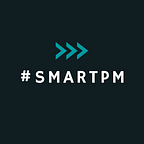#22 How to Become a Data-Driven Product Manager?
4 min readAug 15, 2023
Becoming a more data-driven product manager involves integrating data analytics and insights into your decision-making process. Here’s a step-by-step guide, along with references to helpful resources, to help you on your journey:
- Understand the Value of Data: Educate yourself and your team about the significance of data-driven decision-making. Recognize that data can provide insights that lead to better products and user experiences.
Read “The Advantages of Data-Driven Decision Making” by Harvard Business Review - Define Clear Goals: Start with specific, measurable goals for your product. Whether it’s increasing user engagement, improving conversion rates, or reducing churn, having clear objectives will help you identify the right data to focus on.
Read “How to Set SMART Goals” - Identify Relevant Metrics: Determine the key performance indicators (KPIs) that align with your goals. For instance, if you’re focusing on user engagement, metrics like daily active users, session duration, and retention rates are relevant.
- Implement Data Tracking: Work with your development team to ensure that the necessary data tracking tools are implemented in your product. Tools like Google Analytics, Mixpanel, or custom analytics solutions can help collect relevant data.
Action Steps:
1.Collaborate with your development team to implement tracking codes for key user actions.
2. Set up events and conversions in your analytics platform to track user interactions.
Learn : Google Analytics , Mixpanel - Collect User Feedback: Combine quantitative data with qualitative insights. Engage with users through surveys, interviews, and feedback forms to gain a deeper understanding of their behaviors and preferences.
Action Steps:
1. Develop user surveys to gather feedback on user satisfaction and pain points
2. Conduct user interviews to uncover insights into user needs and behaviors.
Read : The Art of Giving and Receiving Feedback, Forbes - Analyze and Interpret Data: Regularly review the collected data to identify trends, patterns, and anomalies. Use tools like data visualization software to make the information more accessible and understandable.
Action Steps:
1. Use data visualization tools like Tableau or Power BI to create informative dashboards
2. Set up regular data review sessions with your team to identify actionable insights.
Learn: How to Create Interactive Dashboards on Tableau, Power BI Community Discussions - Hypothesis Testing: Formulate hypotheses based on your data analysis. For example, if you notice a drop in user engagement, hypothesize potential reasons and design experiments to test your assumptions.
- Experimentation: Run controlled experiments or A/B tests to validate your hypotheses. This allows you to make informed decisions based on real-world user responses.
Read :
1. “Lean Analytics: Use Data to Build a Better Startup Faster” by Alistair Croll and Benjamin Yoskovitz
2. “A/B Testing: The Complete Guide” by Optimizely - Iterate and Learn: Continuously iterate your product based on the insights gained from data. Embrace a culture of learning from both successes and failures to refine your strategies.
- Collaborate Across Teams: Collaborate with data analysts, engineers, designers, and marketing teams. Sharing insights and discussing findings can lead to comprehensive solutions.
Action Steps:
1. Schedule cross-functional meetings to discuss data insights and brainstorm potential actions
2. Encourage team members to share their observations and insights based on the data.
Read: Key to Cross Functional Collaboration - Stay Updated: Stay informed about data analytics trends and tools. Attend webinars, workshops, and conferences to learn from experts and keep up with industry advancements.
Action Steps:
1. Follow thought leaders in data analytics on social media platforms
2.Participate in online courses or certifications related to data analytics and visualization. - Balance Data and Intuition: While data is crucial, don’t ignore your intuition and industry expertise. Use data to validate your ideas, but also rely on your experience to make nuanced decisions.
- Communicate Insights: Present your data-driven insights to stakeholders clearly and concisely. Use visuals to help convey complex information in an understandable manner.
Action Steps:
1. Prepare data-driven presentations with visuals to communicate findings effectively
2. Craft concise and actionable recommendations based on the data. - Continuous Improvement: As you gain more experience, refine your data analysis techniques and strategies. Continuously seek opportunities to enhance your skills.
Action Steps:
1. Engage in peer reviews of data analyses to receive constructive feedback
2.Take advanced data analysis courses to further enhance your skills.
Learn:
1. Data Science and Analytics Courses
2. Data Analysis and Visualization Courses
By incorporating data into your decision-making process using these actionable steps and references, you’ll be equipped to make informed choices that lead to better products, improved user experiences, and ultimately, business success.
